Mechanical Engineer
900+ Mechanical Engineer Interview Questions and Answers

Asked in Mahindra & Mahindra

Q. How does a diesel generator work?
A diesel generator works by converting diesel fuel into mechanical energy which is then converted into electrical energy.
Diesel fuel is injected into the combustion chamber where it ignites and creates high pressure gases that push the piston down, creating mechanical energy.
The mechanical energy is then converted into electrical energy through the use of an alternator.
The alternator uses a magnetic field and a conductor to generate an electrical current.
The electrical curren...read more
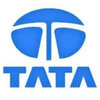
Asked in Tata Sponge Iron

Q. What types of equipment require lubrication, and how is it typically applied?
Lubrication is necessary for smooth functioning of equipment. Different types of equipment require different lubrication methods.
Equipment with moving parts require lubrication to reduce friction and wear.
Oil or grease can be used as lubricants depending on the equipment.
Lubrication intervals should be followed as per manufacturer's recommendations.
Examples of equipment that require lubrication include engines, pumps, bearings, and gears.

Asked in Maruti Suzuki

Q. What type of spark plug is used in Maruti Suzuki vehicles?
NGK spark plugs are used in Maruti Suzuki cars.
Maruti Suzuki uses NGK spark plugs in their cars.
NGK is a popular brand of spark plugs known for their quality and durability.
NGK spark plugs are designed to improve fuel efficiency and reduce emissions.
Other car manufacturers also use NGK spark plugs in their vehicles.

Asked in L&T Construction

Q. What is pascals law, what is entropy
Pascal's law states that pressure applied to a fluid is transmitted equally in all directions. Entropy is a measure of disorder or randomness in a system.
Pascal's law is important in hydraulic systems, where pressure is used to transmit force.
Entropy is a thermodynamic property that increases with the degree of disorder in a system.
Entropy can be used to predict the direction of chemical reactions and the efficiency of energy conversion processes.
Asked in Narmada Cement Company

Q. How can I verify your proficiency in Marathi, as stated in your resume?
I am fluent in Marathi, having used it in both personal and professional settings throughout my life.
I have completed my education in Marathi medium, which has strengthened my language skills.
I regularly communicate with family and friends in Marathi, ensuring fluency in everyday conversations.
I have worked on projects where Marathi was the primary language for documentation and presentations.
I can read and write in Marathi, as demonstrated by my ability to draft reports and ...read more
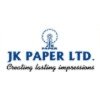
Asked in JK Paper

Q. How do you identify problems in gearboxes, fans, and blowers?
To identify problems in gearbox, fans, and blowers, one can perform visual inspections, listen for abnormal noises, check for vibrations, monitor temperature, and conduct performance tests.
Perform visual inspections to check for any signs of wear, damage, or leaks.
Listen for abnormal noises such as grinding, rattling, or whining sounds.
Check for vibrations in the gearbox, fans, or blowers, which may indicate misalignment or imbalance.
Monitor temperature levels to ensure they ...read more
Mechanical Engineer Jobs




Asked in Reliance Industries

Q. What are the different types of pump and sealing system you known
Different types of pumps include centrifugal, positive displacement, and axial flow. Sealing systems include mechanical, gland, and magnetic.
Centrifugal pumps use a rotating impeller to create a flow of fluid. Examples include end-suction, inline, and multistage pumps.
Positive displacement pumps move fluid by trapping a fixed amount and forcing it through the discharge. Examples include piston, diaphragm, and gear pumps.
Axial flow pumps move fluid parallel to the axis of rota...read more

Asked in Samvardhana Motherson Group

Q. What is the purpose of a fire prevention inspection in a building?
Inspection is a thorough examination or assessment of a building or equipment to ensure safety and compliance with regulations.
Inspections involve checking for potential hazards, defects, or violations of codes and standards.
Inspectors may use tools such as cameras, measuring devices, or testing equipment during the inspection.
The purpose of an inspection is to identify and address any issues that could pose a risk to safety or health.
Examples of inspections include fire safe...read more
Share interview questions and help millions of jobseekers 🌟


Asked in Neometrix Engineering

Q. In a partially submerged body, for stable equilibrium, the metacenter will be: A. Above the geometric center of the body, B. Below the geometric center of the body, C. Below the buoyancy point, D. At the metace...
read moreIn a partially submerged body, the metacentre is above the geometric centre for stable equilibrium.
The metacentre is a point where the buoyant force acts when the body is tilted.
For stable equilibrium, the metacentre must be above the center of gravity.
Example: A ship floating in water has its metacentre above its center of gravity, ensuring stability.
If the metacentre is below the center of gravity, the body will be unstable and may capsize.
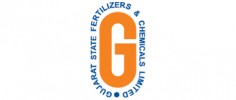

Q. What is function of Pump, Turbine ?
Pumps are used to transfer fluids from one place to another, while turbines convert fluid energy into mechanical energy.
Pumps are used in various applications such as water supply, irrigation, and oil refineries.
Turbines are commonly used in power generation plants to convert the energy of flowing water, steam, or gas into mechanical energy.
Pumps and turbines are both types of machines that involve the movement of fluids.
Pumps generally increase the pressure of the fluid, whi...read more
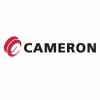
Asked in Cameron

Q. Which theory of failure is suitable for ductile materials, and which is suitable for brittle materials?
The theory of failure suitable for ductile materials is the Von Mises criterion, and for brittle materials, it is the Maximum Principal Stress theory.
Ductile materials undergo plastic deformation before failure, so the Von Mises criterion, which considers the yield strength of the material, is suitable.
Brittle materials fail suddenly without any plastic deformation, so the Maximum Principal Stress theory, which considers the tensile strength of the material, is suitable.
Examp...read more

Asked in Barak and Brazos Engineering

Q. How can you measure 4 liters of water using a 5-liter tank and a 3-liter tank when you have running tap water and are not allowed to use markings?
Measure 4 liters using a 5-liter and a 3-liter tank through strategic filling and pouring.
Fill the 5-liter tank completely.
Pour water from the 5-liter tank into the 3-liter tank until the 3-liter tank is full.
This leaves you with 2 liters in the 5-liter tank.
Empty the 3-liter tank completely.
Pour the remaining 2 liters from the 5-liter tank into the 3-liter tank.
Now fill the 5-liter tank again completely.
Pour water from the 5-liter tank into the 3-liter tank until it is full ...read more

Asked in Maruti Suzuki

Q. What is the secondary coil resistance in a Maruti Suzuki vehicle?
The secondary coil resistance in Maruti Suzuki is not publicly available.
Maruti Suzuki does not disclose the secondary coil resistance of their vehicles.
The secondary coil resistance can vary depending on the specific model and year of the vehicle.
It is important for a mechanical engineer to have knowledge of electrical systems in vehicles.
Secondary coil resistance is a measure of the coil's ability to conduct electricity.
Other factors that can affect the performance of a coi...read more

Asked in Blue Star

Q. 7. what is adiabatic process and Hyperbolic process
Adiabatic process is a thermodynamic process where no heat is exchanged with the surroundings. Hyperbolic process is a type of adiabatic process.
Adiabatic process occurs when there is no heat transfer between the system and its surroundings
Hyperbolic process is a type of adiabatic process where the pressure and volume of a gas are inversely proportional
Adiabatic compression of a gas can cause an increase in temperature
Adiabatic expansion of a gas can cause a decrease in tempe...read more

Asked in JK Paper

Q. How do you identify a problem in a bearing while a machine is running?
To identify a problem in a running machine bearing, one can listen for abnormal noises, check for excessive vibration, monitor temperature, and inspect for wear or damage.
Listen for abnormal noises such as grinding, squeaking, or knocking sounds.
Check for excessive vibration in the machine or bearing housing.
Monitor the temperature of the bearing using an infrared thermometer or thermal imaging camera.
Inspect the bearing for signs of wear, such as pitting, scoring, or discolo...read more
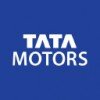
Asked in Tata Motors

Q. What are the steps involved in Quality Control (QQC)?
Quality Control (QC) involves a series of steps to ensure products meet quality standards.
1. Establish quality standards and specifications for the product.
2. Create a quality control plan outlining inspection procedures and criteria.
3. Perform inspections and tests during production to identify defects.
4. Implement corrective actions to address any issues found.
5. Monitor and evaluate the effectiveness of the quality control process.
6. Document all quality control activities...read more

Asked in Maruti Suzuki

Q. What is the engine oil capacity?
The engine oil capacity varies depending on the make and model of the vehicle.
Engine oil capacity can be found in the owner's manual or by contacting the manufacturer.
It is important to use the correct amount of oil to ensure proper lubrication and prevent damage to the engine.
Overfilling or underfilling the oil can lead to engine problems.
Some vehicles may require more oil for larger engines or for towing purposes.

Asked in Tata Steel

Q. Is the suction pressure of a centrifugal pump negative or positive?
Centrifugal pump suction is positive.
Centrifugal pumps work by creating a low pressure at the inlet or suction side of the pump.
This low pressure causes the fluid to flow into the pump.
The suction pressure is always lower than the discharge pressure.
The suction pressure can be measured using a pressure gauge.
Positive suction pressure is required for the pump to work properly.

Asked in Applied Materials

Q. List 20 alternative applications for a stapler.
20 alternative uses of a stapler
As a makeshift hole puncher
To hold together a broken necklace chain
To create a makeshift zipper pull
To create a makeshift lock for a door
To create a makeshift weight for a fishing line
To create a makeshift needle for sewing
To create a makeshift screwdriver
To create a makeshift zipper repair tool
To create a makeshift paper clip
To create a makeshift zipper stopper
To create a makeshift zipper slider
To create a makeshift zipper puller
To create a ma...read more

Asked in Eicher Motors

Q. BS6, BS4 engine EATS Fireing order of 6 cylinder, 4 cylinder
The firing order of a 6-cylinder engine is different from that of a 4-cylinder engine.
The firing order determines the sequence in which the cylinders ignite their fuel-air mixture.
In a 6-cylinder engine, the firing order can vary depending on the engine design.
A common firing order for a 6-cylinder engine is 1-5-3-6-2-4.
In a 4-cylinder engine, the firing order is typically 1-3-4-2.
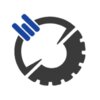
Asked in Morphedo Technologies

Q. 1- How do you ensure design for manufacturability (DFM) and design for assembly (DFA)? 2- What materials would you choose for a lightweight yet strong structural component and why? 3- How do you handle tight de...
read moreEffective DFM and DFA ensure efficient production and assembly, while material selection and prioritization are crucial for project success.
DFM Principles: I focus on simplifying designs by minimizing part count and using standard components, which reduces manufacturing complexity.
DFA Techniques: I utilize assembly jigs and fixtures to streamline the assembly process, ensuring parts fit together easily and accurately.
Material Selection: For lightweight yet strong components, ...read more

Asked in TCS

Q. What is your expected CTC?
Expected CTC should be discussed during the interview process.
It is important to research industry standards and company salary ranges before giving a number.
Consider the job responsibilities, experience, and qualifications when determining expected CTC.
Be open to negotiation and understand the company's benefits package.
Avoid giving a specific number too early in the interview process.
Instead, ask about the company's salary range and discuss expectations.
Example: Based on my...read more

Asked in Canteen Stores Department

Q. Which is the largest ocean in the world?
The Pacific Ocean is the largest ocean in the world.
The Pacific Ocean covers an area of about 63 million square miles.
It is larger than all the other oceans combined.
It stretches from the Arctic Ocean in the north to the Southern Ocean in the south.
The Pacific Ocean is home to numerous islands, including Hawaii and Easter Island.

Asked in Blue Star

Q. What is the difference between IDU and ODU?
IDU and ODU are abbreviations used in air conditioning systems. IDU stands for Indoor Unit and ODU stands for Outdoor Unit.
IDU is the unit that is installed inside the room or building, while ODU is installed outside.
IDU is responsible for cooling or heating the air inside the room, while ODU is responsible for dissipating the heat outside.
IDU is connected to ODU through refrigerant pipes and electrical cables.
Examples of IDU include wall-mounted units, ceiling cassette units...read more

Asked in Bengal Beverages

Q. What steps do you take in your plant to prevent breakdowns?
During zero break in the plant, we perform routine maintenance tasks and inspections to ensure smooth operations.
Performing equipment checks and maintenance
Inspecting and repairing any mechanical issues
Calibrating and adjusting machinery
Conducting preventive maintenance
Updating maintenance logs and documentation

Asked in Tata Sponge Iron

Q. Which coupling is applicable?
Couplings are used to connect two shafts together. The type of coupling used depends on the application.
Flexible couplings are used to compensate for misalignment between shafts.
Rigid couplings are used when shafts are perfectly aligned.
Gear couplings are used for high torque applications.
Jaw couplings are used for low to medium torque applications.
Disc couplings are used for high-speed applications.
Chain couplings are used for applications with large distances between shafts...read more
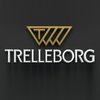
Asked in Trelleborg

Q. Consider you need to ship a part today. If you work without a break, you can finish the work. However, you are hungry and need to drink water. What would you do?
In a high-pressure situation, prioritizing health and efficiency is key. Taking a brief break can enhance overall productivity.
Take a 1-minute break to hydrate and refuel, which can improve focus and efficiency.
Consider quick snacks like nuts or a protein bar that can be consumed easily.
Set a timer for 1 minute to ensure you return to work promptly after the break.
Use this break to stretch and refresh your mind, which can lead to better problem-solving.
If possible, delegate m...read more

Asked in ARCADIS

Q. Which pipe material is suitable for NaCl 2500 ppm fluid, and why?
Duplex stainless steel is good for NaCl 2500 ppm fluid due to its high corrosion resistance and strength.
Duplex stainless steel has a high resistance to corrosion and pitting
It has a high strength and toughness
Other materials like carbon steel and copper alloys may corrode in NaCl solutions

Asked in Building Solutions

Q. We are looking for a more experienced person, but you have limited practical experience and mostly theoretical knowledge. How can you contribute effectively in our industry environment?
I may have theoretical knowledge only, but I am a quick learner and willing to work hard to gain practical experience.
I am eager to learn and willing to put in extra effort to gain practical experience.
I have a strong foundation in theoretical knowledge, which can be applied to real-world situations.
I am a quick learner and can adapt to new situations easily.
I am open to feedback and willing to learn from my mistakes.
I am a team player and can work collaboratively with experi...read more
Asked in P. Das Infrastructure

Q. Have you any idea about which kind of process in Sewage treatment plant( chemist, mechanical and electrical), mean that they ask me about all three fields.
Sewage treatment plants involve chemical, mechanical, and electrical processes.
Chemical processes involve the use of chemicals to remove contaminants from the sewage.
Mechanical processes involve physical methods like screening, sedimentation, and filtration to remove solids and other impurities.
Electrical processes involve the use of electrical equipment like pumps and motors to move sewage through the treatment plant.
Examples of processes include activated sludge process, tr...read more
Interview Questions of Similar Designations
Interview Experiences of Popular Companies






Calculate your in-hand salary
Confused about how your in-hand salary is calculated? Enter your annual salary (CTC) and get your in-hand salary


Reviews
Interviews
Salaries
Users










